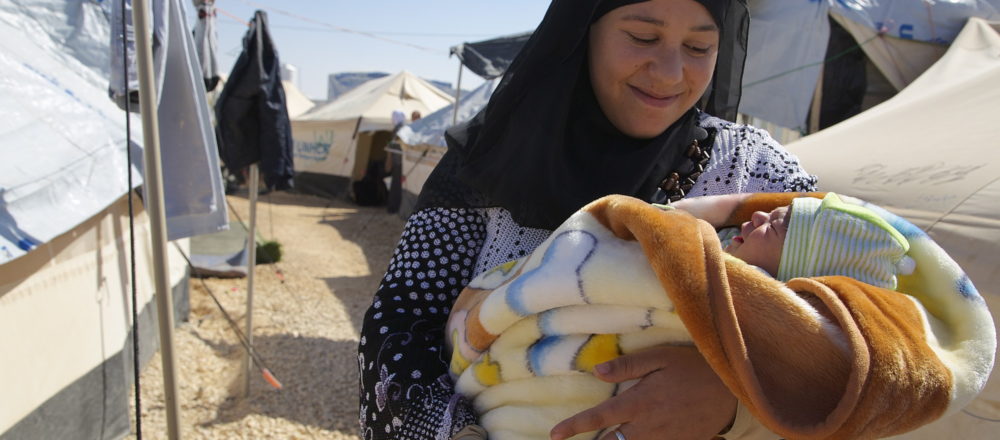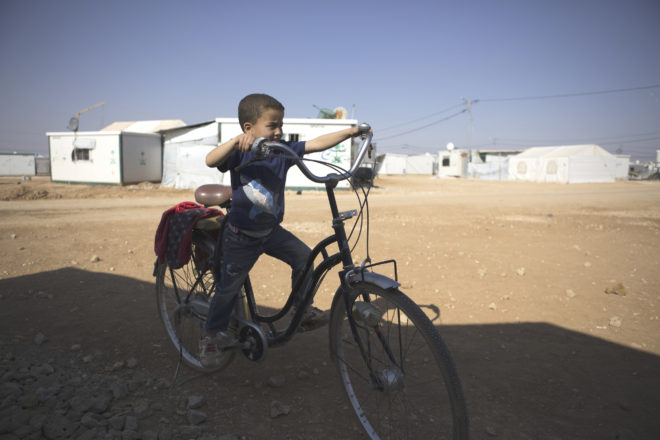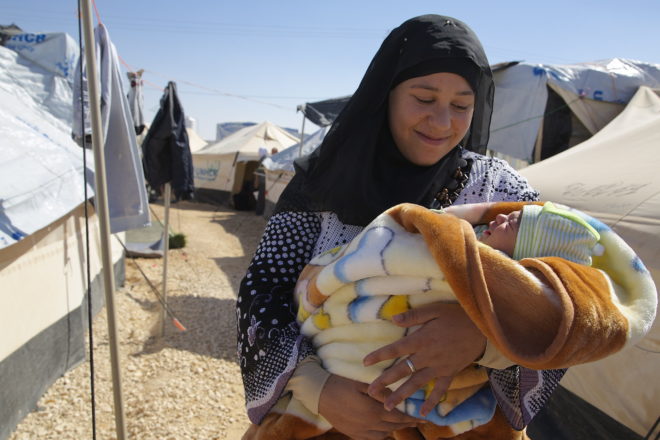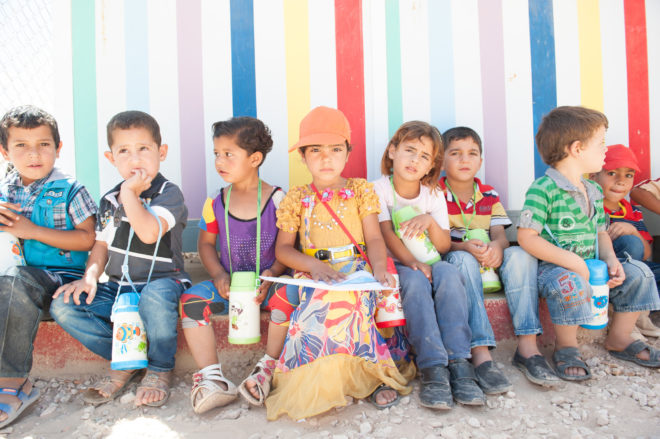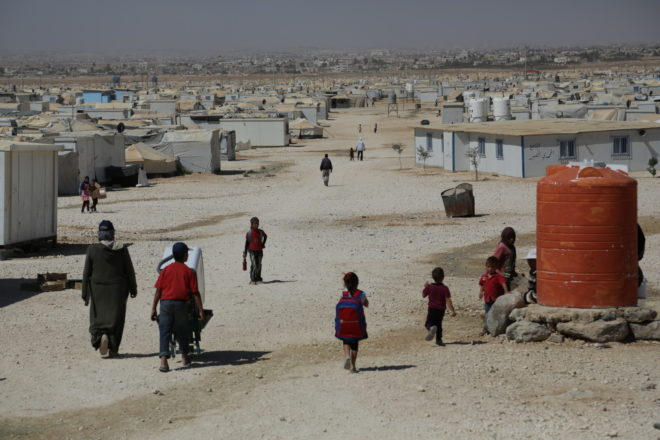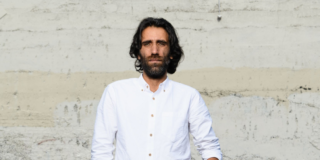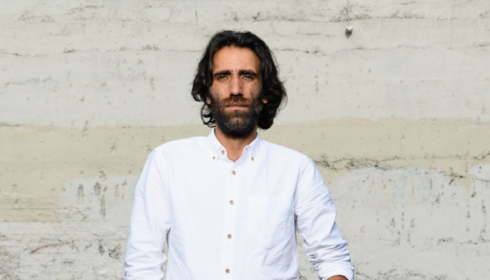Za’atari refugee camp in northern Jordan is the temporary home for around 80,000 refugees, forced to flee the ongoing violence in Syria. Save the Children Australia’s head of campaigns, Tim Norton, shares what it was like to spend a day exploring the camp – now a vast city with a displaced population.
The Za’atari refugee camp is huge. The scale hit me as I drove through the main streets, where I saw stocked shops, soccer grounds and teenagers having BMX bike races over jumps. The camp feels very settled, with families, kids and aid workers milling around and chatting amidst an air of calm.
My first stop was the food station, where our staff work with the World Food Program to distribute rations to around 17,000 families who live in the camp – a monumental task that is undertaken and completed in the early hours of the morning.
These rations of bulgur wheat, lentils, pasta, rice, sugar and vegetable oil may be basic but they keep families from going hungry. The UNHCR also distributes complementary food rations of tuna, tomato paste, canned meat, chickpeas, fava beans, tea and halva.
Save the Children staff manage huge numbers of people who file in every day to collect their ration. They also manage the distribution of ATM cards that are pre-loaded with support funds for families to buy their own food. The infrastructure of the camp has grown to the point where there are proper supermarkets operating here, under the watch of aid agencies to ensure prices are kept fair.
More than half of the camp’s population are children.
Next I visited the maternal health and nutrition program. This is a mother and baby hangout space where Save the Children runs groups that bring mums together, teach them about hygiene, sanitation and breastfeeding and offer psycho-social support.
Grandmothers, aunts and sisters in Za’atari are also invited to take part, which is key to the success of this program. In a traditional Middle Eastern social structure where some of these matriarchs hold great weight within family structures, this has made a huge impact on socialising maternal and newborn health issues throughout the camp.
The generosity and friendliness of people who have been through so much puts a lump in your throat.
While we were visiting, a nearby family of refugees brought us a tray of incredibly strong coffee, and insisted we visit their nearby home, which is nothing more than a tin shed. The generosity and friendliness of people who have been through so much puts a lump in your throat – truly heart-warming every time.
Finally we visited a kindergarten, run by Save the Children, which provides basic education, psycho-social support and other supportive services. We joined the local staff in lessons, dancing, finger painting, drawing and counting. One little girl, who was around 7 years old, was fascinated by the pictures of my own baby boy that I showed her on my phone. Looking at the photos, she taught me the Arabic word for “beautiful” (“jamila”).
More than half of the camp’s population are children. A large proportion are orphaned or separated from parents and other relatives – often arriving from neighbouring Syria, where at least three million children under the age of six have known nothing but war their entire lives. Save the Children’s recent report, Invisible Wounds, found that Syria is now at a tipping point where millions of children have been so consistently exposed to toxic stress that their chances of recovering fully are dwindling by the day.
The programs that Save the Children staff operate within the Za’atari refugee camp show how important our interventions on the ground are, and the huge impact they have for children who have fled the conflict across the border.
We give out bread so that people do not become malnourished. We operate a space where mums can come together and give them the help they need to take care of their babies. We run a kindergarten and make sure that a generation of kids can read, write and have a future.
And all of this is run by local staff who often drive for hours every day just to reach the camp, and who work long hours in the baking sun or freezing winter, with fluctuating budgets and ever-changing circumstances.
Za’atari provides a snapshot of the good and bad parts of humanity. It’s enough to make me shed a tear, before downing another shot of that bittersweet coffee and thanking the man who provided it to me – a man who has nothing more than his family by his side and a refugee identity card in his hand.
